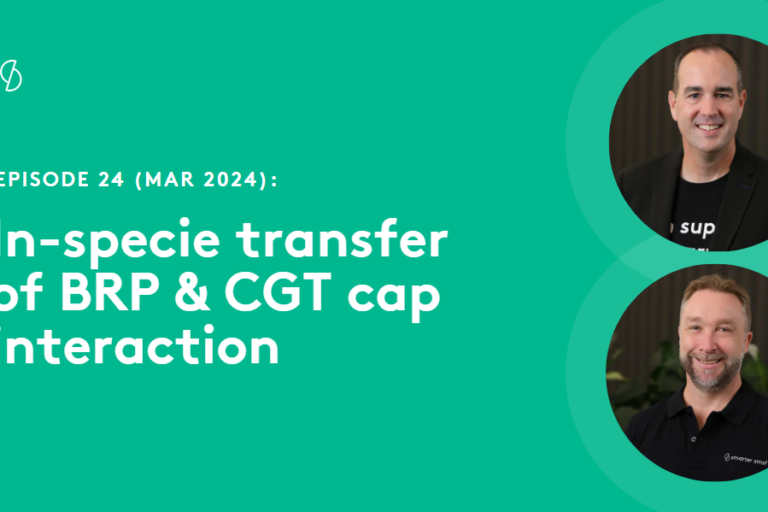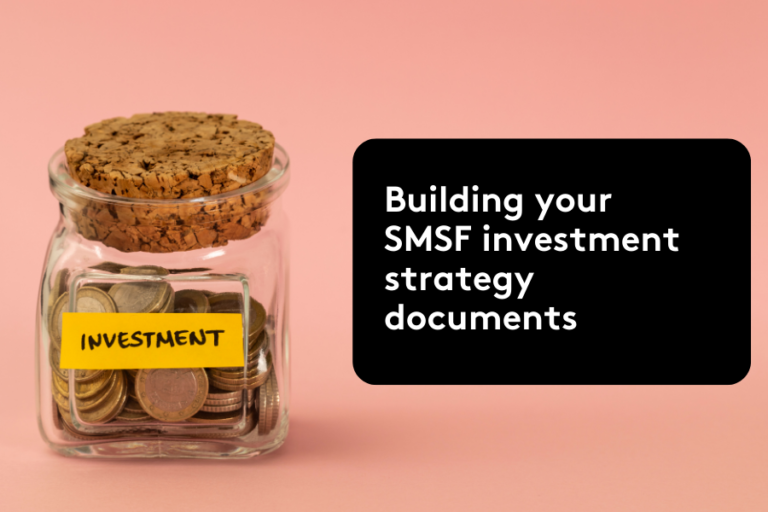- Single Asset / Heavy Asset Concentration minute
- Single Asset / Heavy Asset Concentration minute
Order your SMSF Investment Strategy documentation using our popular and cost-effective subscription packages, or simply pay-as-you-go (PAYG).
PAYG – $176 incl. GST
or login if you are a member.
Create SMSF Investment Strategy documentation online, delivered instantly
Smarter SMSF provides the following documentation as part of their investment strategy suite:
- Investment Strategy Report – to be used when creating a new investment strategy for the fund in accordance with SIS Regulation 4.09.
- Investment Strategy Review Statements – to be used when the trustees need to undertake a regular review of the investment strategy, linking back to the initial investment strategy report.
- Single asset / Heavy asset concentration minute – to be used where the trustees have a lack of diversification in the fund that requires additional evidence as to the decision made by the trustees to invest in a particular way.
Report
Generate an SMSF Investment Strategy report for a self-managed super fund (SMSF), which formulates and gives effect to risk, diversification, liquidity, the ability to discharge the fund’s liabilities and the requirement to consider insurance cover for one or more fund members.
The following documents will be generated as part of the completed order:
- Investment Strategy Report;
- Trustee minute adopting the investment strategy; and
- Single Asset / Heavy asset concentration minute (where indicated)
Review Statement
Generate an SMSF Investment Strategy Review Statement that satisfies the requirements of SIS Regulation 4.09 for the trustees having reviewed the existing strategy and have considered the areas of risk, diversification, liquidity, the ability to discharge the fund’s liabilities and the ongoing requirement to consider insurance cover for one or more fund members.
The following documents will be generated as part of the completed order:
- Investment Strategy Review Statement; and
- Review of Single Asset / Heavy asset concentration minute (where indicated)
Single Asset Class / Heavy Asset Concentration
Where the fund has a lack of diversification due to investing within a single asset or single asset class, you can select to generate an additional trustee minute demonstrating why inadequate diversification meets the fund’s objectives and personal circumstances of the fund.
Currently, you can generate a template to be completed by the fund trustee(s). We will in the future allow for key questions of the various requirements within the superannuation laws to be answered that will generate an investment strategy report (NB. will need to consider licensing issues within this option).
To start ordering, simply follow these steps:
- Sign up to the Smarter SMSF platform (it’s free).
- You will receive an email with your login details.
- Once logged into our platform, select ‘Documents > Create New’.
- Follow the prompts, review & submit your order.
- You’ll have the order instantly delivered to you in less than 5 mins.
Need assistance?
If you require help with ordering your investment strategy SMSF documents, get in contact with us via live chat, by telephone on 1300 95 94 76, email team@smartersmsf.com.
Become a Member & save
Document Packages
We recognise that practices come in all different shapes and sizes, and that’s why our Create document packages have been developed as a bundle to suit the size of your SMSF business. Our document packages start at $180 p/m for ANY 25 docs p/a and provide a substantial saving monthly.
To work out how many documents you might need for your business, try our document calculator that can help to determine the package that is right for you.
The following sample documents are available:
- SMSF Investment Strategy Template
- SMSF Investment Strategy Review Statement
- Single Asset / Heavy Asset Concentration Review Minute
To view a sample:
- Sign up for free to gain access to our platform.
- View sample documents from our Knowledge Centre.
- Order documents on a PAYG basis.
Other references
Webinars
Want to know more about the SMSF Investment Strategy documentation that is available through the Smarter SMSF platform? You can watch these webinar recordings to find out more about how we help trustees to comply with the requirements within SIS Regulation 4.09 that apply to SMSFs.
This webinar explores the:
- state of play with investment strategies
- the regular review requirement for investment strategies
- the auditor’s role and observations
- finding key lessons to build a compliant investment strategy
- demonstrating the investment strategy documentation available on the Smarter SMSF platform.
This webinar explores the:
- The ATO letters about diversification issues
- Investment strategy requirements within the super laws
- licensing considerations providing an investment strategy to an SMSF trustee
- documentation available to support trustees to comply with the investment strategy requirements.
FAQs
Does an SMSF need an Investment Strategy?
Yes, the covenants within section 52B of the SIS Act (super laws) requires that the trustee(s) of a SMSF to have an investment strategy. This sets out the fund’s objectives and specifies the type of investments that the fund can make.
How regularly can an SMSF change its investment strategy?
You should prepare the Investment Strategy Review Statement to support a review based upon any of the above decisions.
What documents does Smarter SMSF produce for the Investment Strategy?
- Single Asset / Heavy Asset Concentration minute
- Single Asset / Heavy Asset Concentration minute
We have an investment strategy in place, but only want to change the current asset allocation of the fund?
If the fund’s objectives and overall circumstances are not changing, but you wish to change the asset allocation within the investment strategy, you can produce a ‘change asset allocation’ document on the smarter smsf platform.
We have an investment strategy in place, but need a trustee minute to comply due to heavy asset concentration in a particular asset class?
You can create a stand-alone trustee minute that provides resolutions as to why to trustees believe a lack of diversification is appropriate to the member’s needs in meeting their retirement objectives.
The single asset class / heavy asset concentration minute covers:
- Australian Listed Shares
- International Listed Shares
- Australian Fixed Interest
- International Fixed Interest
- Cash – short term and long term holdings
- Direct Property
- Property held through a unit trust
- Cryptocurrencies, such as bitcoin











